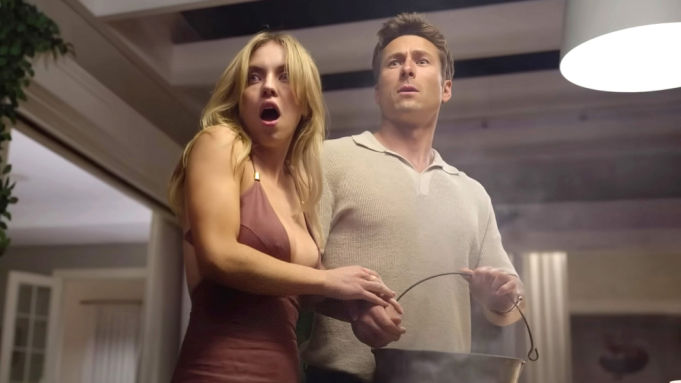The Resurgence of ‘Anyone but You’ in Theaters Raises a Question: Has Streaming Created a Kind of Stockholm Syndrome?
In 2020, streaming platforms were hailed as the saviors of cinema. Yet, why do we still cling to this notion?
“Anyone but You,” featuring Sydney Sweeney and Glen Powell as a couple with mutual disdain, has emerged as a rare sleeper hit. While its success has surprised many, I was among the few critics who appreciated it. I described it as “a rom-com tailored for the era of antipathy,” noting its fresh take on romance in today’s context. The film’s unexpected popularity underscores a message to Hollywood: the romantic comedy genre is resurging, and studios should capitalize on it. However, beyond this, there’s a deeper implication regarding why the rom-com faded away initially.

The truth is, the romantic comedy never truly disappeared; it simply migrated to streaming platforms, a shift that was initially met with approval. These made-for-streaming rom-coms, often low-budget productions, found their audience primarily among younger viewers. Occasionally, they even spawned franchises, like the “Kissing Booth” series. However, despite the success of one theatrical hit (“Anyone but You”), which received mixed reviews, the appeal of streaming rom-coms seems to be waning.
As we approach the four-year mark since the onset of the pandemic, we’re still grappling with its aftermath and the myths marketed to us. The promised salvation of streaming, where audiences could enjoy movies from the comfort of home, now appears to have been oversold. Looking back, our relationship with streaming seems to have evolved into a kind of Stockholm Syndrome for true movie enthusiasts.
“Anyone but You” may offer synthetic romance with a hint of excitement, but it provides an experience unavailable at home: the thrill of witnessing love and conflict unfold on the big screen, surrounded by a relatable audience. Viewers are clamoring for more, yet the industry continues to prioritize streaming over theatrical releases.
Consider the case of Richard Linklater’s “Hit Man,” a festival favorite starring Glen Powell, which was acquired by Netflix for a hefty sum. Despite Powell’s rising star power, the film will bypass theaters entirely, trapped in the streaming abyss. This pattern repeats with other indie hits like “Fair Play” and “Flora and Son,” which, despite significant investments from streamers, failed to generate buzz upon release.
How many more instances like this must occur before industry stakeholders—directors, producers, actors—acknowledge the detrimental impact of the streaming “revolution” on the future of cinema? While simultaneous releases of blockbuster films like “Barbenheimer” and “The Bubble” signal a shift in the industry, the indie scene thrives on a smaller scale. These smaller films, if given a chance in theaters, could fuel audience enthusiasm and invigorate the cinematic experience.
At Sundance this year, promising documentaries like “Will & Harper” and “Super/Man: The Christopher Reeve Story” were snapped up by streamers, depriving them of potential theatrical runs. This trend raises questions about the motivations behind streaming giants’ aggressive acquisitions. Is it truly about serving audiences, or is there a broader strategy to stifle potential indie hits and maintain dominance?
In a capitalist landscape dominated by tech giants like Netflix and Apple, traditional theatrical distributors struggle to compete. However, the continued survival of theatrical releases is crucial for the vitality of cinema. While streaming offers convenience, it should not come at the expense of the communal experience and cultural significance of movie theaters.
Four years ago, we were promised that streaming would revolutionize entertainment. Yet, this narrative now appears flawed. We mustn’t allow the genuine benefits of streaming to blind us to its drawbacks. Let’s not succumb to a form of Stockholm Syndrome where we worship the very force that threatens to extinguish the essence of cinema.

